Pot Farmers Sparked Blaze
La Brea Caused by Cooking Fire
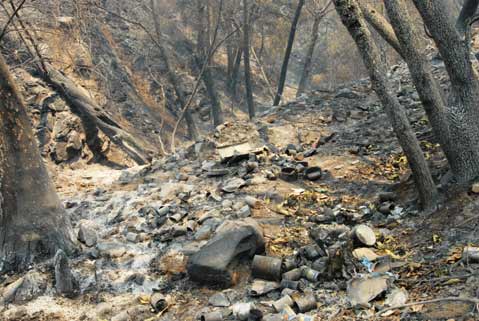
It appears that Santa Barbarans are beginning to feel the heat from the Mexican drug war. The latest indication is last week’s announcement by U.S. Forest Service and Sheriff’s Department officials that La Brea Fire was started by a cooking fire left by tenders of an illegal marijuana grow in Los Padres National Forest. The investigation into origins of the 225,000 marijuana plants-valued, according to the Sheriff’s Department, at $686 million-that authorities have eradicated in Santa Barbara County this year alone is being kept largely under wraps. However, Sheriff Bill Brown said evidence has been discovered linking many of the farms to drug traffickers from Mexico.
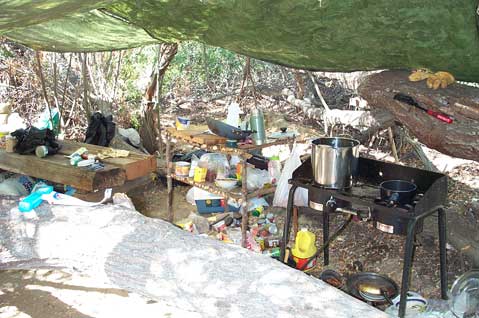
So far, the only Mexican national linked to pot farms the public has been made aware of is Don Ruiz, found lying on a stretch of Highway 154 in Santa Ynez Valley after being shot to death. He was later found to be part of what authorities called a massive grow on private land near Lompoc belonging to rancher Jim Poett, the husband of Independent Editor-in-Chief Marianne Partridge. Authorities said they were satisfied that Poett was unaware of the illegal agricultural operation on his large, public-lands-bordered property.
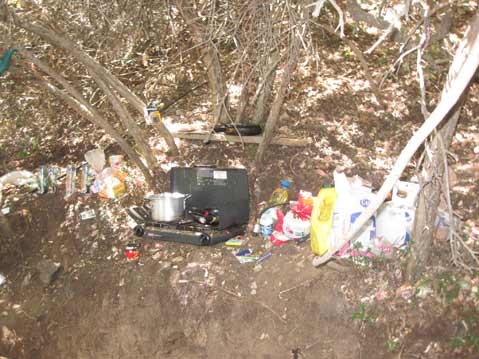
Russ Arthur, a Forest Service investigator, said that based upon the current investigation, La Brea fire was started in a deep canyon in the Sierra Madre Mountains, a part of the Los Padres National Forest just north of Santa Maria. “This problem is widespread,” he said, referencing illegal marijuana grows he has helped eradicate nationwide. Arthur said that three to four wildland fires a year are believed to be started in California by illegal marijuana cultivators.
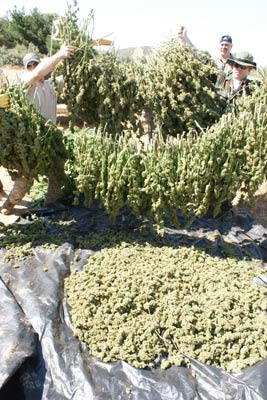
At a press conference Tuesday, August 18, authorities stood at a table spread with items found at other grows in Santa Barbara County over the past several years, including a .22 caliber rifle, a .357 magnum handgun, even a bear trap that was discovered loaded and set near a grow in Blue Canyon in 2004. Arthur said an AK-47 automatic assault rifle was found at the grow revealed by La Brea Fire last week, which contained 30,000 marijuana plants. He added that investigators typically find one to two miles of plastic irrigation tubing as well as a significant amount of human waste and other refuse, pesticides, fertilizer, and propane tanks used to fuel cooking fires at grows such as the one that touched off La Brea. “[Illegal grows] are also a danger to our environment,” said Brown, claiming that illegal damming of waterways by pot growers is causing watershed deterioration and erosion in many places. Arthur pointed out that 50 percent of California’s water originates on Forest Service land.
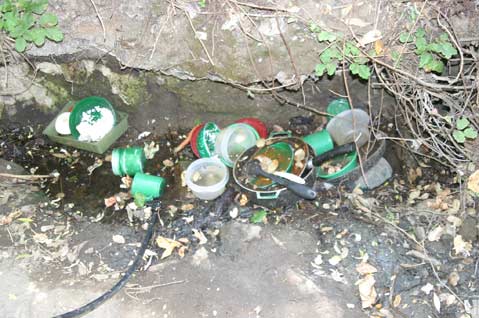
According to authorities at the press conference, it has been difficult to find illegal grows, as they’re typically located in dense chaparral on more remote areas of public lands, albeit always near a water source. The grow whose tenders apparently started La Brea Fire was next to a creek and far from the nearest road. More detailed information is being kept classified as the search for the six or so people thought to have abandoned the farm continues. Commander Laz Salinas, head of the Sheriff’s Department’s Central Investigations Division and Special Operations Division, said that the six suspects are likely still at large in the San Rafael Wilderness.
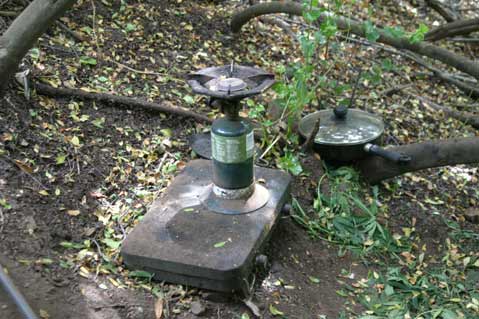
Of Santa Barbara County’s 2,700 square miles of land area, approximately 2,000 are wilderness, which Brown said makes air support the only practical way to find the often well-hidden grows. Sheriff’s Department helicopters looking for illicit marijuana cultivation have been supported by DEA, U.S. Air National Guard, and U.S. Coast Guard aviation units. The sheriff has also received grant funding to the tune of $100,000 from the DEA, and $20,000 from the Forest Service, to help continue eradication efforts. Brown encouraged people living in rural areas to keep an eye out for people seen carting rolls of plastic irrigation tubing and other agricultural supplies in or out of Los Padres. He also cautioned visitors to National Forest recreation areas to be on the lookout for potentially violent pot farmers and for traps set to protect illegal marijuana crops, evoking images of two campers who were chased by rifle-wielding men in a pickup truck near a grow on Forest Service land outside of New Cuyama several months ago.



